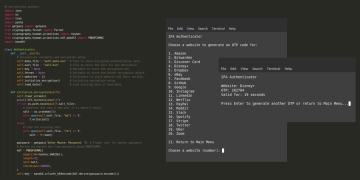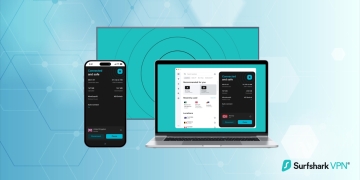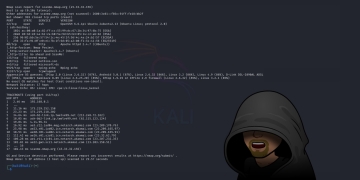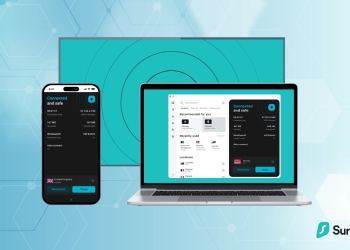Man-in-the-middle (MitM) attacks have earned a notorious reputation as one of the most insidious and potentially devastating cybersecurity threats today. These stealthy adversaries operate covertly in the digital shadows, silently intercepting, altering, or even stealing sensitive information during online communication. In this article, we embark on a journey deep into the realm of MitM attacks, shedding light on the intricacies of their methods and motivations.
By understanding the inner workings of these attacks, you'll gain valuable insights into the cunning tactics employed by cybercriminals. However, knowledge alone is not enough. We go beyond theory to equip you with practical strategies and defenses, enabling you to fortify your digital defenses effectively.
What is a Man-in-the-Middle Attack?
Picture a scenario where you're engaged in a private conversation with a close friend over a phone call. You assume that your exchange is confidential, but unbeknownst to you both, an eavesdropper has cunningly intercepted the call. This eavesdropper possesses the ability to stealthily listen in on every word exchanged, collecting not only the mundane details but also sensitive and personal information. What's more, this third party possesses the alarming capability to manipulate the conversation. They can subtly alter the words you hear or even inject their own thoughts and intentions into your dialogue. Essentially, this eavesdropper has adeptly positioned themselves as an invisible presence “in the middle” of your communication channel, operating stealthily and insidiously. This intrusion is the essence of what we term a Man-in-the-Middle (MitM) attack.
MitM attacks, akin to their real-world eavesdropping counterpart, follow a parallel concept of clandestine intrusion. They manifest when a cybercriminal clandestinely infiltrates and disrupts communication between two parties, often operating covertly and undetected. These two parties could encompass various scenarios such as a pair of users engaged in online communication, a user attempting to access a trusted website, or even two machines exchanging data within a network. In essence, the attacker ingeniously inserts themselves into this communication pathway, executing their actions stealthily, with neither party being aware of their unwelcome presence. Much like the eavesdropper in the earlier analogy, MitM attackers aim to eavesdrop on conversations, pilfer sensitive data, and potentially manipulate the exchanged information to their advantage. This silent, behind-the-scenes intrusion poses a potent threat, demanding our awareness and countermeasures to safeguard our online interactions and sensitive information.
How Do Man-in-the-Middle Attacks Work?
To understand how MitM attacks work, let's break down the process into its fundamental steps.
Interception
The first step in a MitM attack is the interception of communication. The attacker positions themselves strategically between the two parties they intend to target. This can be achieved through various means, such as exploiting vulnerabilities in the network, devices, or software. For example, if an attacker gains access to a vulnerable Wi-Fi router, they can intercept all traffic passing through that network. In more sophisticated attacks, physical access to network infrastructure may be necessary, but remote attacks are also common.
Another method attackers use for interception is through the compromise of DNS servers. By manipulating the DNS settings, they can redirect traffic to their own servers, effectively placing themselves in the communication path without the victims' knowledge.
Monitoring
Once the attacker successfully positions themselves as the “middleman,” they can start monitoring the communication traffic passing between the two parties. This monitoring includes capturing data packets, which can contain a wide range of sensitive information, from login credentials and credit card numbers to personal messages and confidential business data.
In the case of website communication, the attacker can intercept and read data transmitted between a user's browser and a web server. This could include the content of web pages, login details, or even files being uploaded or downloaded.
Manipulation
While passive monitoring is a significant concern, MitM attackers often go a step further by actively manipulating the data being exchanged. This manipulation can take various forms:
- Message Alteration: Attackers may alter the content of messages or data packets. For instance, they could modify an email's content or an online purchase order, potentially leading to misinformation or financial losses.
- Traffic Redirection: Attackers can reroute traffic to malicious destinations. For example, when you think you're connecting to your bank's website, the attacker redirects you to a convincing fake site designed to steal your login credentials.
- Code Injection: In some cases, MitM attackers inject malicious code into the communication stream. This code can carry out a range of actions, from delivering malware to the victim's device to initiating unauthorized actions on their behalf.
Covering Tracks
A skilled MitM attacker will attempt to cover their tracks to remain undetected. They may use encryption techniques to hide their activities or employ methods to erase any evidence of their intrusion. This makes it challenging for both the victims and security professionals to identify the attack.
By the time a MitM attack is discovered, considerable damage may have already occurred. Therefore, proactive measures, such as the security practices mentioned later in this article, are important in preventing these attacks in the first place.
Types of Man-in-the-Middle Attacks
MitM attacks come in various flavors, each targeting different aspects of digital communication.
Session Hijacking
Session hijacking, also known as session fixation or session sidejacking, is a MitM attack focused on gaining unauthorized access to an established user session. Attackers aim to take control of a session that a user has already logged into. They often achieve this by stealing session tokens or cookies that authenticate the user.
Imagine you've logged into your email account on a public computer, and an attacker manages to intercept your session cookie. They can then use that stolen cookie to access your email account without needing your password. This type of attack highlights the importance of securing session management and using technologies like HTTPS, which encrypts data transmission, to protect against session hijacking.
SSL Stripping
SSL Stripping attacks exploit a vulnerability in the way some websites handle secure connections. SSL (Secure Sockets Layer) and its successor, TLS (Transport Layer Security), are cryptographic protocols that ensure secure communication between a user's browser and a website's server.
In an SSL Stripping attack, the attacker downgrades a secure connection (HTTPS) to an insecure one (HTTP) without the user's knowledge. As a result, the attacker can intercept and view the data being exchanged between the user and the website in plain text. This type of attack underscores the importance of always verifying the presence of HTTPS and the authenticity of SSL certificates when visiting websites.
DNS Spoofing
DNS Spoofing, also known as DNS Cache Poisoning, is an attack on the Domain Name System (DNS), which is responsible for translating human-readable domain names (e.g., www.example.com) into IP addresses (e.g., 192.168.1.1). Attackers manipulate DNS records to redirect users to malicious websites or IP addresses that they control.
For instance, if an attacker successfully poisons a DNS cache, they can redirect users trying to visit a legitimate website to a malicious clone that appears authentic. Users may then unknowingly enter sensitive information, such as login credentials or credit card details, on the attacker's fraudulent site.
Wi-Fi Eavesdropping
Wi-Fi Eavesdropping attacks are particularly common in public Wi-Fi hotspots, where users often connect to open or unsecured networks. Attackers set up rogue Wi-Fi hotspots with names similar to legitimate ones, enticing users to connect to them.
Once connected, the attacker can intercept and monitor all data traffic passing through the compromised hotspot. This means they can capture login credentials, personal messages, and any other data transmitted over the network. To protect against this type of attack, it's essential to avoid connecting to unsecured Wi-Fi networks, use a VPN for encryption, and verify the legitimacy of public hotspots.
Email Hijacking
Email hijacking is a MitM attack that targets email communication. Attackers intercept emails between two parties, often with the goal of stealing sensitive information or manipulating the content of messages.
For example, an attacker might modify an email containing payment instructions, redirecting funds to their account instead of the intended recipient. Alternatively, they could access confidential information or impersonate one of the email correspondents to carry out further malicious activities. Vigilance and secure email practices, such as using end-to-end encryption, can mitigate the risks associated with email hijacking.
The Motives Behind Man-in-the-Middle Attacks
Understanding why attackers employ MitM attacks is important to developing effective defense strategies. Here are some common motives behind these attacks:
- Data Theft: One of the primary motivations behind MitM attacks is data theft. Cybercriminals seek valuable information that they can exploit for financial gain or other malicious purposes. This stolen data may include login credentials, credit card numbers, personal identification information, and more. Once in possession of such data, attackers can use it to commit fraud, make unauthorized purchases, or sell it on the dark web to other malicious actors. Data theft is often the driving force behind MitM attacks, as the stolen information can be a lucrative commodity in the cybercriminal underground
- Financial Gain: MitM attacks can be financially rewarding for cybercriminals. By intercepting and manipulating financial transactions, attackers can redirect funds to their own accounts or manipulate stock market data for personal profit. For instance, an attacker might alter the destination bank account details in a wire transfer, diverting a significant sum of money into their control. The potential for substantial financial gain makes MitM attacks an attractive option for those motivated by greed.
- Espionage: Nation-states and advanced cyber espionage groups often utilize MitM attacks as part of their intelligence-gathering efforts. By intercepting sensitive government or corporate communications, these attackers can gain valuable insights, including classified information, geopolitical strategies, or trade secrets. Such information can be used for geopolitical advantage, economic espionage, or other strategic purposes. These highly sophisticated MitM attacks may be part of broader state-sponsored cyber operations.
- Identity Theft: MitM attackers frequently engage in identity theft, aiming to assume the digital identities of their victims. By intercepting user sessions or capturing personal information, they can impersonate individuals online. This can lead to a range of malicious activities, from committing fraud to conducting cybercrimes under the victim's identity. Identity theft not only harms individuals but can also damage an individual's reputation and trust in digital systems and services.
- Information Manipulation: Some MitM attacks focus on manipulating the information being exchanged between parties. By altering news articles, emails, financial reports, or other critical documents, attackers can create confusion, spread misinformation, or tarnish reputations. This type of MitM attack can have far-reaching consequences, affecting public perception, financial markets, and even national security. Motivations for information manipulation may vary from ideological reasons to attempts to influence public opinion.
Protecting Yourself and Your Organization
Now that we've unraveled the enigma of MitM attacks, it's time to equip you with the knowledge to defend against them.
Always Use HTTPS
HTTPS (Hypertext Transfer Protocol Secure) is an important defense against MitM attacks. It encrypts data transmission between your browser and a website's server, making it extremely difficult for attackers to intercept or manipulate the data in transit. When visiting websites, ensure that the URL starts with “https://” instead of just “http://.” Some browser extensions, such as “HTTPS Everywhere,” can help enforce secure connections automatically.
Beyond this, website owners should prioritize implementing HTTPS on their platforms. This includes obtaining valid SSL/TLS certificates from trusted certificate authorities and configuring their web servers to use strong encryption protocols and ciphers. By using HTTPS, you significantly reduce the risk of data interception and manipulation during online transactions and communications.
Verify SSL Certificates
To further enhance your online security, always verify the authenticity of SSL certificates when visiting websites. Cybercriminals often use counterfeit certificates to create fake websites that appear legitimate. Before entering sensitive information, click on the padlock icon in your browser's address bar to view the certificate details. Ensure that the certificate issuer is a trusted authority, and the certificate matches the website's domain. If you encounter any discrepancies or warnings, it's wise to refrain from proceeding and report the suspicious site.
For organizations, implementing a robust SSL certificate management process is essential. This includes regularly renewing certificates, using multi-factor authentication for certificate access, and monitoring for any certificate-related anomalies. Additionally, consider implementing a certificate transparency policy, which provides a public record of all issued certificates, allowing you to detect unauthorized certificates issued for your domains.
Beware of Phishing
MitM attacks often begin with phishing attempts to trick users into divulging their credentials or clicking on malicious links. To protect yourself and your organization, exercise caution when dealing with unsolicited emails, especially those from unknown senders. Verify the legitimacy of the sender by checking the email address, and avoid clicking on links or downloading attachments from suspicious sources. If you receive an email that requests sensitive information or instructs you to take urgent actions, independently verify the request through other channels before complying.
Organizations should conduct regular phishing awareness training for employees to help them recognize and respond to phishing attempts. Implement email filtering solutions that can detect and quarantine phishing emails. Additionally, consider deploying Domain-based Message Authentication, Reporting, and Conformance (DMARC) to prevent email spoofing and domain impersonation, which are common tactics used in MitM attacks.
Use a VPN (Virtual Private Network)
When accessing the internet, especially on public Wi-Fi networks, consider using a VPN. A VPN encrypts your internet connection, making it difficult for MitM attackers to intercept your data. This added layer of encryption ensures that your online activities remain confidential and secure, even on untrusted networks. Choose a reputable VPN service with a no-logs policy and strong encryption protocols.
Organizations should consider providing VPN access to employees, especially when they need to access company resources remotely. Ensure that the VPN solution used is robust, regularly updated, and properly configured for secure and private communication.
Keep Software Updated
Regularly updating your operating system, web browsers, and applications is a simple yet effective way to protect against MitM attacks. Developers frequently release updates that include security patches addressing known vulnerabilities. By keeping your software up to date, you minimize the risk of attackers exploiting these vulnerabilities to gain access to your system or network.
Organizations should establish patch management policies to ensure that all software and systems are promptly updated. This includes not only end-user devices but also servers, routers, and network infrastructure. Implement automated patch management solutions where possible to streamline the process and reduce the window of vulnerability.
Two-Factor Authentication (2FA)
Enabling 2FA adds an extra layer of security to your accounts. Even if an attacker manages to steal your login credentials, they won't be able to access your account without the second authentication factor. Utilize 2FA methods such as SMS codes, authenticator apps, or hardware tokens to enhance your account security.
For organizations, 2FA should be mandatory for accessing sensitive systems and applications. Implement strong 2FA policies and provide guidance to employees on setting up and using 2FA on their accounts.
Network Security
Ensure the security of your home or business network. Use strong encryption protocols like WPA3 for Wi-Fi networks and change default router login credentials. Monitor network devices for any unauthorized access or suspicious activity. Implement network segmentation to isolate critical systems from less secure parts of the network, limiting the potential impact of an attack.
Organizations should employ network intrusion detection and prevention systems (IDS/IPS) to actively monitor network traffic for suspicious patterns and MitM attack indicators. Conduct regular security audits and penetration testing to identify vulnerabilities that attackers could exploit.
Monitor Account Activity
Frequently review your financial statements, bank accounts, and credit card statements for any unusual or unauthorized transactions. Promptly report any suspicious activity to your financial institution. For organizations, implement automated fraud detection systems and transaction monitoring to detect unusual financial activities and patterns.
Consider using account activity alerts or notifications provided by your financial institutions. These alerts can notify you of large transactions, account logins from new or unusual locations, or any changes to your account details.
Educate Yourself and Others
Knowledge is a potent defense against MitM attacks. Stay informed about the latest cybersecurity threats, including MitM attack techniques and trends. Share this knowledge with your family, friends, and colleagues, emphasizing the importance of cybersecurity best practices. Encourage them to adopt strong password management, use 2FA, and exercise caution when clicking on links or downloading files from unknown sources.
For organizations, invest in cybersecurity awareness training programs for employees. These programs should cover MitM attack scenarios, phishing awareness, and safe online practices. Regularly update training materials to reflect evolving threats and provide ongoing cybersecurity education to keep employees vigilant and informed.
Use Security Software
Install reputable antivirus and anti-malware software on your devices. These programs can detect and prevent MitM attacks and other cyber threats. Keep the security software up to date to ensure it can effectively identify and mitigate new threats as they emerge.
Organizations should deploy comprehensive endpoint security solutions that include antivirus, anti-malware, intrusion detection, and firewall capabilities. Regularly update and configure security software to provide real-time protection against MitM attacks and other cyber threats. Conduct regular security assessments and vulnerability scans to identify and address potential weaknesses in your organization's security posture.
Conclusion
Man-in-the-middle (MitM) attacks represent a pervasive and evolving threat, capable of causing substantial harm to individuals, organizations, and even nations. These attacks leverage stealth and deception to intercept, manipulate, or steal sensitive data, posing significant risks to privacy, financial security, and information integrity.
It is imperative to remain vigilant and proactive in our approach to cybersecurity. Awareness and education are the first lines of defense against MitM attacks. Understanding the various tactics and motivations behind these attacks empowers individuals and organizations to implement effective countermeasures and best practices, thereby reducing their vulnerability.
Moreover, cybersecurity is an ongoing endeavor that demands continuous adaptation and diligence. Regularly updating security software, practicing safe online behaviors, and staying informed about emerging threats are vital components of maintaining a strong defense. By fostering a culture of cybersecurity and embracing the principles outlined in this article, we can collectively safeguard our data and ensure that the silent cyber threat of MitM attacks remains just that – silent and ineffective against our resilient defenses.






















